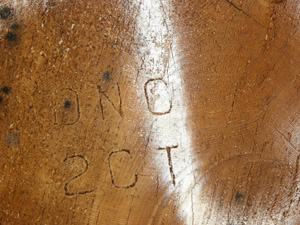 1. Do I need a FLEGT license for Canadian wood and wood products?
1. Do I need a FLEGT license for Canadian wood and wood products?
The FLEGT Action Plan is a voluntary scheme with measures to tackle illegal logging in the world’s forests. One of the measures in the Action Plan, FLEGT Voluntary Partnership Agreements, involves developing bilateral agreements between the European Union (EU) and primarily tropical wood exporting countries. These agreements aim to improve forest governance in these countries and guarantee that the wood imported into the EU is from legal sources.
For that reason wood harvested in Canada and wood products made from that wood are not available with a FLEGT license.
2. Do I need details of sub-national region of harvest and details of concession of harvest and harvesting plans for wood harvested in Canada?
That information is indicated within the EUTR as being required ‘where applicable’. ‘Where applicable’ relates to illegality of harvest and whether the risk of illegal harvesting varies between either sub-national regions or concessions of harvest within a country. With reference to the information we have identified under ‘The Evidence – Canadian forest legislation’ and ‘Country of Harvest – corroboration of low risk’, and the definitions given in EUTR Article 2 (f) and (h), Canada meets the criteria for ‘legally harvested’ and can demonstrate a consistently negligible risk of illegal harvesting.
In light of such evidence, access to information on the supply of timber beyond ’country of harvest’ is not a requirement.
3. Can Canadian suppliers provide me with a guarantee or certificate or an appropriate declaration in contract documents that their products are harvested, produced and delivered in accordance with the applicable legislation of regulation 995/2010 (EUTR)?
The EUTR does not require the issuance of a supplier’s guarantee or declaration. It is the EU operator who must be in compliance with the EUTR and fulfill the required due diligence obligations when importing wood and wood products. Canadian companies comply with ‘applicable legislation’ [Regulation (EU) 995/2010, Article 2 (f) and (h)]. To review that ‘applicable legislation’ see under ‘The Evidence – Canadian forest legislation’.
And for further detail see – ‘EUTR Due diligence’
4. I need details of Canadian species, how will that information be provided?
When purchasing wood and wood products from Canada, customary commercial contracts will identify the product and the species of wood that is being imported. Those product descriptions will help EU operators address the information required under Article 6 of the EUTR.
In the case of Canadian species, most are relatively easily identified so the need for the scientific name to avoid misidentification or misrepresentation is reduced.
Some species are harvested, used and marketed as a ‘collective mix’, S-P-F (spruce-pine-fir) being the best known example from Canada. When the operator has identified ‘negligible risk’ of illegal harvesting, which also extends to all species harvested, for description of products such as S-P-F as required under EUTR Article 6, 1. (a), its ‘trade’ name, which in the case of S-P-F also identifies the common genera names, may provide an appropriate description.
For Canadian products manufactured using wood harvested in Canada but for which individual species are not generally identified, for example pulp and paper products, the manufacturer will provide, on contractual documentation for the purposes of description of product, a complete list of the species which may be included in their raw material input.
For further documentation for all Canadian wood and wood products, for purposes of meeting EUTR obligations for description of tree species, including identification of individual species in the ‘collective mixes’, the NLGA ‘Standard Grading Rules for Canadian Lumber’ lists Canadian commercial species together with their scientific names. A copy can be obtained via www.nlga.org
5. What information is available for Canadian plywood?
Canadian plywood is manufactured to industry standards which set minimum requirements and under a rigorous factory production control system with each sheet being marked with a detailed grade stamp identifying both manufacturer and plywood type i.e. DFP and CSP. That identification is included in contract documents which provide the product description. This may be deemed appropriate for product description under EUTR Article 6, 1. (a).
Canadian plywood is manufactured in accordance with:
CSA 0121 – Douglas fir plywood (DFP)
CSA 0151 – Canadian softwood plywood (CSP)
Both of the above standards list the wood species, with both common and scientific names, which it is permitted to use when manufacturing plywood in accordance with those standards. Reference to those standards in contract documents provides EU operators with a simple means of accessing detailed wood species information should they wish to do so when meeting due diligence obligations. Copies can be obtained via http://shop.csa.ca/
NOTE – Operators are only obliged to put in place (EUTR Article 6, 1. (a) ) “measures and procedures providing access to the following information concerning the operator’s supply of timber or timber products placed on the market:” – that does not necessarily mean obtaining copies of that information.

